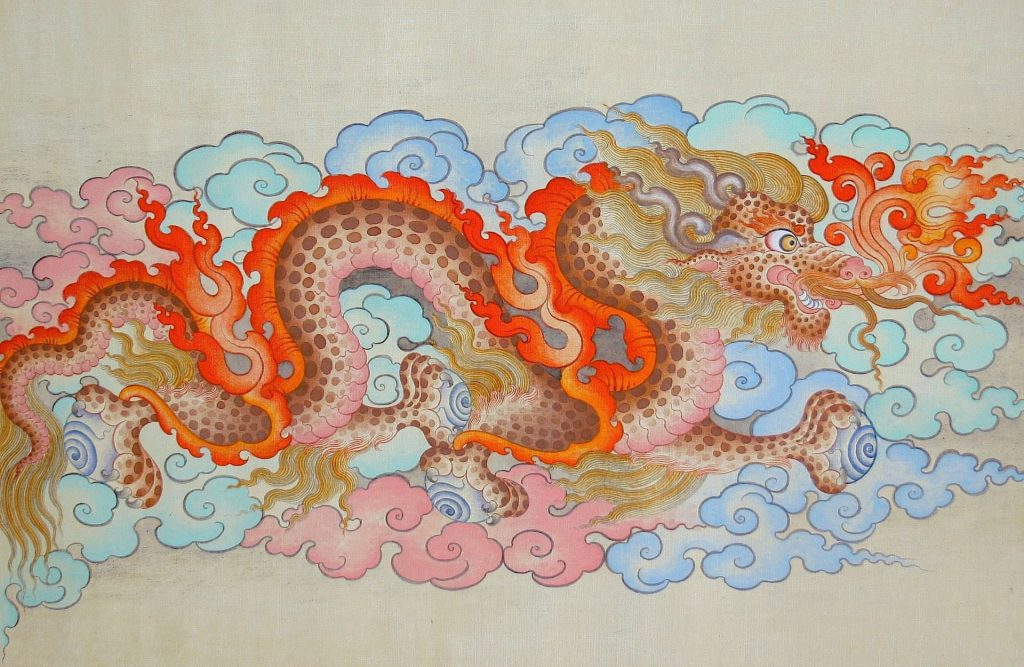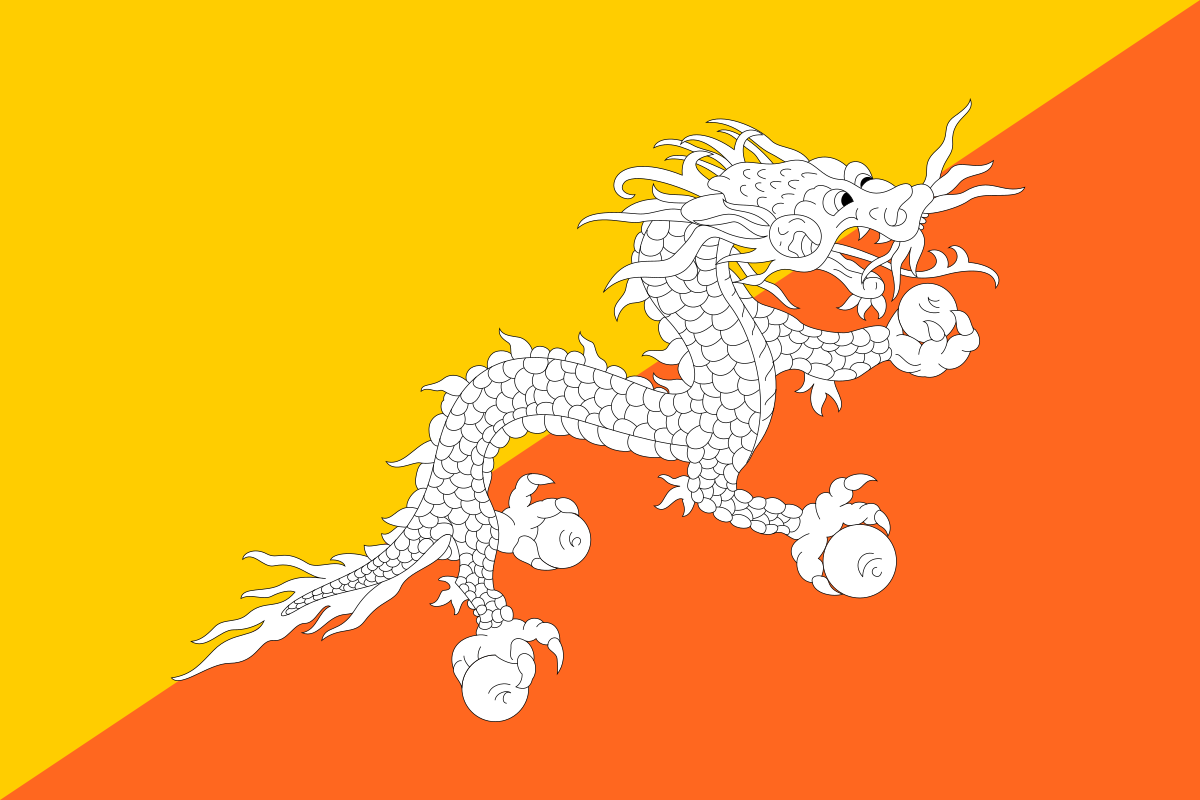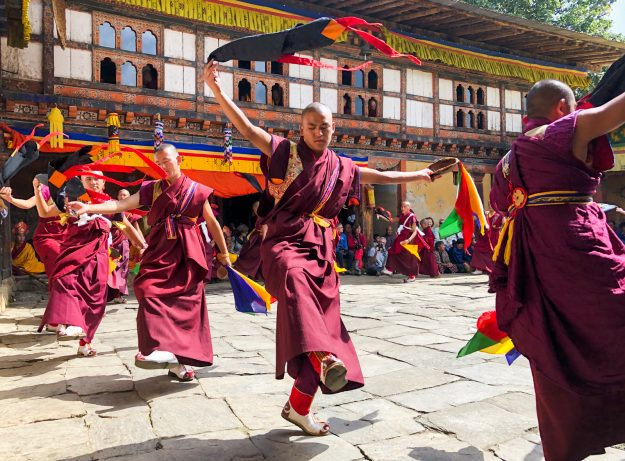The Story Behind the Kingdom's Legendary Name
High in the eastern Himalayas, where jagged peaks pierce the clouds and monasteries cling to cliff faces, thunder rumbles with a frequency that feels almost supernatural. This is Bhutan, a kingdom so deeply intertwined with the power of storms that its very identity is shaped by them. Known to its people as Druk Yul—the Land of the Thunder Dragon—Bhutan's nickname isn't just poetic imagery. It's a window into centuries of mythology, spiritual devotion, and the raw elemental forces that define this enigmatic nation. But why Bhutan is called Land of Thunderbolt goes far beyond weather patterns. The answer lies in ancient legends, sacred lineages, and a culture that sees divinity in the roar of mountain storms.
The Myth of the Thunder Dragon

The origins of Bhutan's legendary name trace back to 1189, when Tibetan Buddhist master Tsangpa Gyare Yeshe Dorje founded Ralung Monastery in Tibet. According to tradition, during the monastery's consecration ceremony, thunder suddenly erupted across clear skies—a phenomenon the lama interpreted as the voice of dragons. In Tibetan Buddhism, dragons are not the fire-breathing creatures of Western lore but celestial serpents associated with water, weather, and enlightenment. This auspicious thunderclap was seen as a divine blessing, marking the birth of the Drukpa Kagyü lineage, one of Buddhism's most influential schools.
The Bhutan Thunder Dragon meaning deepened when this spiritual tradition spread southward into the Himalayan valleys that would become Bhutan. Disciples of the Drukpa lineage established monasteries throughout the region, bringing with them the reverence for "Druk"—the Thunder Dragon. The creature became more than mythological symbolism; it represented the voice of the dharma itself, the sudden, powerful awakening of spiritual truth that strikes like lightning through ignorance. In Bhutanese cosmology, thunder isn't merely sound—it's the roar of enlightenment echoing through the mountains, a reminder that divine power can manifest in the natural world without warning.
Druk Yul — The Official Name of Bhutan
While the world knows this Himalayan kingdom as "Bhutan"—likely derived from the Sanskrit "Bhotanta" meaning "end of Tibet"—the Bhutanese people have always called their homeland something far more evocative: Druk Yul, which translates directly to "Land of the Thunder Dragon." This isn't a tourist-friendly nickname but the country's authentic self-identification, reflecting how deeply the Thunder Dragon mythology permeates national consciousness.
The Druk Yul Bhutan connection extends into virtually every aspect of public life. The national airline bears the name Druk Air, the king holds the title Druk Gyalpo (Dragon King), and the national currency is the ngultrum, meaning "precious dragon." Even the Thunder Dragon Bhutan flag prominently displays the creature at its center. This consistent branding isn't modern nation-building—it's the continuation of an 800-year-old spiritual identity. For Bhutanese citizens, being from Druk Yul means belonging to a land chosen by dragons, where the boundaries between the earthly and divine remain beautifully permeable.
Thunder in the Himalayas: Natural & Symbolic

Geography provides the practical foundation for Bhutan's mythological identity. Nestled between Tibet's high plateau and India's tropical plains, Bhutan occupies a meteorological crossroads where warm, moisture-laden air collides with frigid mountain winds. The result is spectacular: frequent thunderstorms that roll through valleys with dramatic intensity, their echoes magnified by steep gorges and mountain walls. During monsoon season, lightning illuminates dzongs (fortress-monasteries) perched on ridges, creating scenes that seem lifted from sacred paintings.
Yet the Bhutanese have always understood that natural phenomena carry spiritual weight. In Buddhist iconography, thunder represents the sudden, irresistible force of enlightenment—the moment when ignorance is shattered by truth. The vajra (thunderbolt scepter) is one of Buddhism's most sacred ritual objects, symbolizing both the indestructibility of wisdom and the explosive power of compassion. When storms rage across Bhutan's peaks, residents don't simply see weather systems; they witness the Thunder Dragon reminding them of dharma's power. This fusion of meteorology and mythology explains why Bhutan travel culture feels so different from neighboring regions—nature itself becomes scripture.
The Thunder Dragon on the Flag

Perhaps nowhere is Bhutan's nickname more visible than on its national flag, adopted in the 1960s but rooted in far older traditions. The design is strikingly symbolic: a white Druk (Thunder Dragon) clutches jewels in its claws, stretching diagonally across a background divided between saffron-yellow and orange-red. The dragon's white color represents purity and the loyalty of Bhutan's diverse ethnic groups. The jewels symbolize wealth and the perfection of Buddhist thought.
The dual-colored background carries equal significance. The saffron-yellow section represents the secular authority of the monarchy, while the orange-red honors the spiritual power of Buddhism—particularly the Drukpa Kagyü tradition that defines Bhutanese religious life. Together, these elements illustrate Bhutan's unique governance model, where spiritual and temporal powers work in harmony. The Thunder Dragon Bhutan flag doesn't just identify a nation; it declares a philosophy. The dragon's snarling expression and dynamic posture convey protective ferocity—a small kingdom asserting its sovereignty and spiritual strength against a complex world.
Bhutan's Living Culture and Spiritual Legacy

The mythology behind why Bhutan is called Land of Thunderbolt isn't confined to history books or flag symbolism. Walk through any Bhutanese village and you'll find the Thunder Dragon woven into daily existence. Monastery walls feature elaborate murals depicting Druk in vivid colors, his serpentine body coiled protectively around sacred teachings. During festivals like the famous Paro Tshechu, dancers don dragon masks, embodying the creature's power through choreographed movements passed down through generations.
Thunder itself remains an omen carefully interpreted by monks and laypeople alike. A sudden storm during an important ceremony might be read as divine approval or warning. Farmers gauge planting seasons partly by observing lightning patterns across valley systems. This isn't superstition but the continuation of a worldview where Buddhism in Bhutan has never separated from the environment that shaped it. Even as Bhutan cautiously modernizes—introducing internet and tourism while measuring progress through Gross National Happiness rather than GDP—the Thunder Dragon remains central to national identity, a reminder that some truths are too profound to abandon for convenience.
Conclusion
The story of why Bhutan is called the Land of Thunderbolt reveals far more than etymological curiosity. It illuminates how a nation's identity can be forged from the marriage of geography, mythology, and unwavering spiritual devotion. From the 12th-century thunder that inspired the Drukpa lineage to the contemporary symbolism of the national flag, the Thunder Dragon represents Bhutan's essence: powerful yet benevolent, rooted in ancient wisdom yet vibrantly alive.
For travelers drawn to the Himalayas, understanding the Druk Yul Bhutan connection transforms a visit from sightseeing into pilgrimage. When thunder rolls across Punakha Valley or lightning illuminates Tiger's Nest Monastery, you're not just witnessing weather—you're hearing the voice of dragons, the same divine roar that has defined this extraordinary kingdom for centuries. In Bhutan, the line between legend and reality remains as beautifully blurred as mist on mountain peaks.
